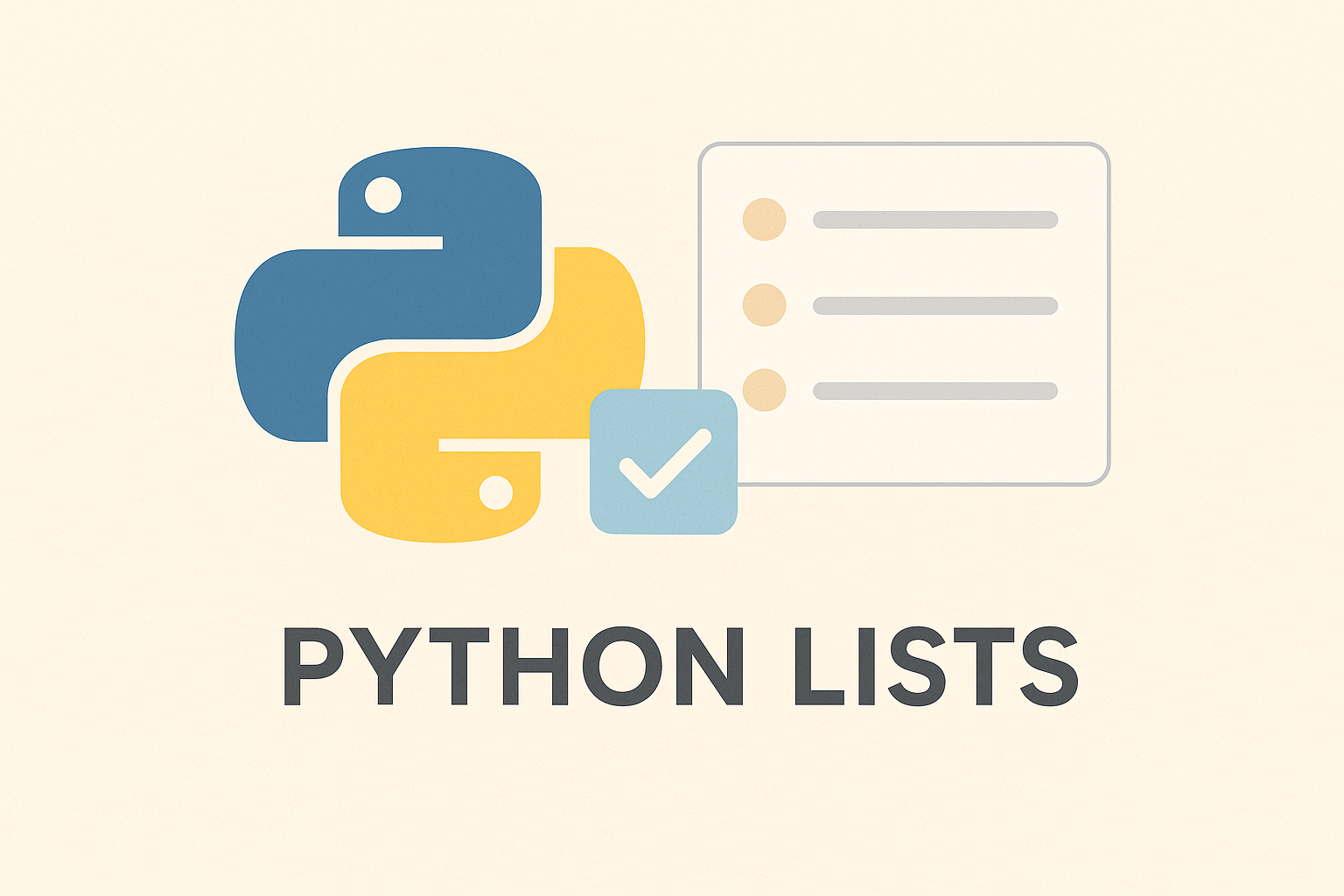In Python, lists are one of the most commonly used data structures. They are flexible, dynamic, and capable of storing multiple data types in a single collection. If you’re learning Python, understanding lists is essential — they form the foundation for many advanced concepts such as loops, comprehensions, and algorithms.

What is a Python List?
A Python list is an ordered collection of items, which can be of any data type such as integers, strings, or even other lists. Lists are mutable, meaning you can change their contents without creating a new object.
# Example of a simple list numbers = [1, 2, 3, 4, 5] print(numbers) # Output: # [1, 2, 3, 4, 5]
Unlike tuples, lists can be modified after creation. You can add, remove, or replace elements anytime.
Creating Lists in Python
Lists can be created using square brackets [] or the list() constructor.
# Different ways to create a list fruits = ["apple", "banana", "cherry"] mixed = [10, "hello", 3.14, True] empty = list() print(fruits) print(mixed) print(empty)
Accessing List Elements
You can access list elements using index numbers. Indexing starts from 0 for the first element.
fruits = ["apple", "banana", "cherry"] # Access first and last elements print(fruits[0]) # apple print(fruits[-1]) # cherry
Modifying Lists
Lists are mutable, meaning you can change elements, add new ones, or delete existing ones.
# Change an element
fruits = ["apple", "banana", "cherry"]
fruits[1] = "orange"
print(fruits) # ['apple', 'orange', 'cherry']
# Add elements
fruits.append("grape") # add one element
fruits.extend(["mango", "kiwi"]) # add multiple
print(fruits)
# Insert at specific position
fruits.insert(1, "pear")
print(fruits)
# Remove elements
fruits.remove("apple")
print(fruits)
List Slicing
Slicing allows you to access a subset of list elements using [start:end] syntax.
numbers = [0, 1, 2, 3, 4, 5, 6] print(numbers[2:5]) # [2, 3, 4] print(numbers[:3]) # [0, 1, 2] print(numbers[4:]) # [4, 5, 6] print(numbers[::2]) # [0, 2, 4, 6]
Looping Through Lists
You can iterate through lists using for loops to process elements one by one.
fruits = ["apple", "banana", "cherry"]
for fruit in fruits:
print("I like", fruit)
Checking Membership
To check if an item exists in a list, use the in or not in operator.
fruits = ["apple", "banana", "cherry"]
if "banana" in fruits:
print("Yes, banana is in the list!")
if "grape" not in fruits:
print("No, grape is not in the list.")
Sorting and Reversing Lists
Lists can be easily sorted alphabetically or numerically using the sort() method. You can also reverse the order with reverse().
numbers = [4, 2, 8, 1, 5] numbers.sort() print(numbers) # [1, 2, 4, 5, 8] numbers.sort(reverse=True) print(numbers) # [8, 5, 4, 2, 1] numbers.reverse() print(numbers) # [1, 2, 4, 5, 8]
List Comprehensions
List comprehensions are a concise way to create lists in Python. They provide a shorter syntax for generating lists from existing iterables.
# Example: create a list of squares squares = [x**2 for x in range(1, 6)] print(squares) # [1, 4, 9, 16, 25] # Example: filter even numbers even = [x for x in range(10) if x % 2 == 0] print(even) # [0, 2, 4, 6, 8]
Nested Lists (2D Lists)
Lists can contain other lists, making it possible to represent matrix-like structures.
matrix = [
[1, 2, 3],
[4, 5, 6],
[7, 8, 9]
]
# Access element from nested list
print(matrix[1][2]) # 6
# Loop through 2D list
for row in matrix:
for value in row:
print(value, end=" ")
Real-World Example: Shopping Cart Program
Let’s build a simple real-world example — a shopping cart program using Python lists.
cart = []
def add_item(item):
cart.append(item)
print(f"{item} added to cart.")
def remove_item(item):
if item in cart:
cart.remove(item)
print(f"{item} removed from cart.")
else:
print(f"{item} not found.")
def show_cart():
print("Your cart contains:", cart)
# Example usage
add_item("Milk")
add_item("Bread")
add_item("Eggs")
show_cart()
remove_item("Bread")
show_cart()
This small program demonstrates how lists can be used to store dynamic collections of data — a concept that can scale up to database or API-driven systems.
Conclusion
Python lists are one of the most versatile and powerful data structures you can use. They are easy to create, manipulate, and integrate into larger applications. Whether you’re building a simple script or a complex web app, mastering lists will make your Python code more efficient and readable.
For further reading, check out the official Python documentation on lists at Python.org.

